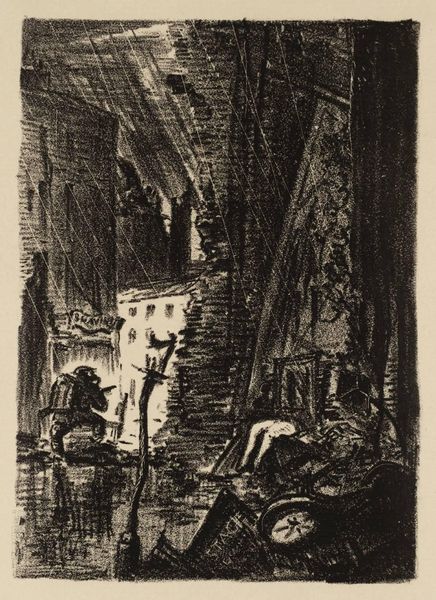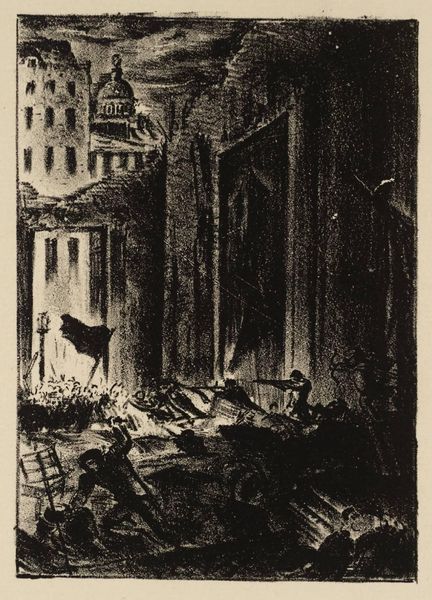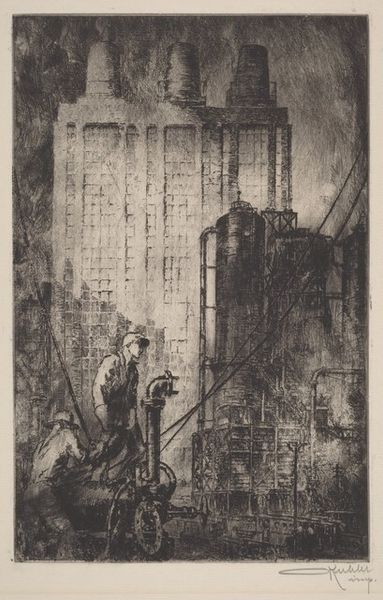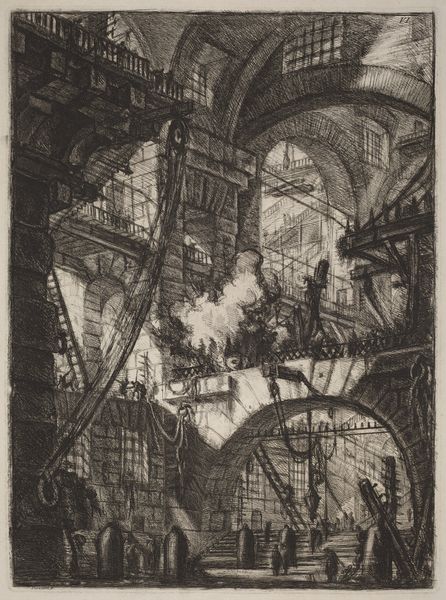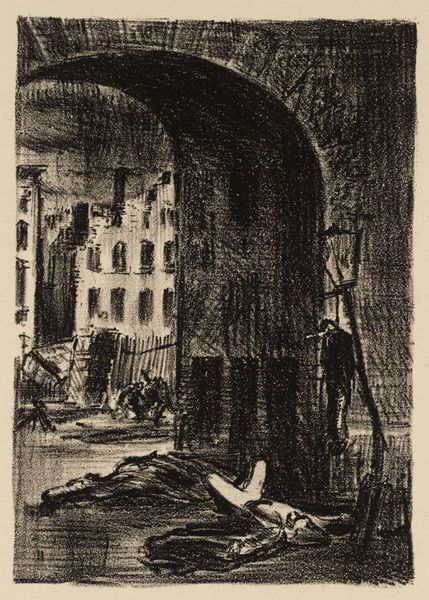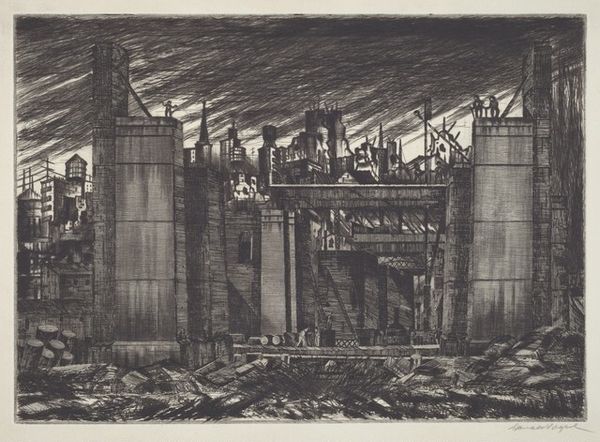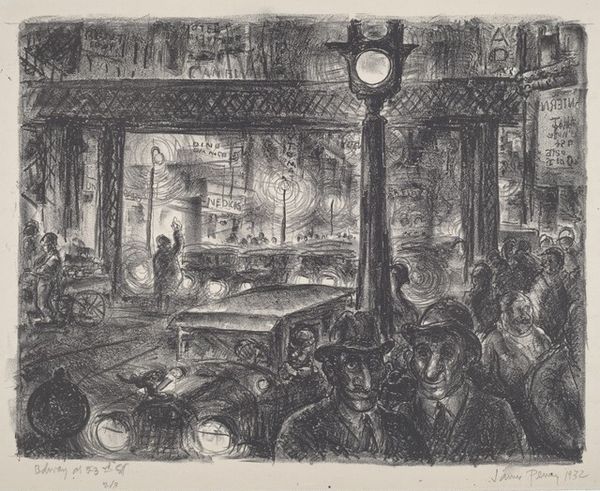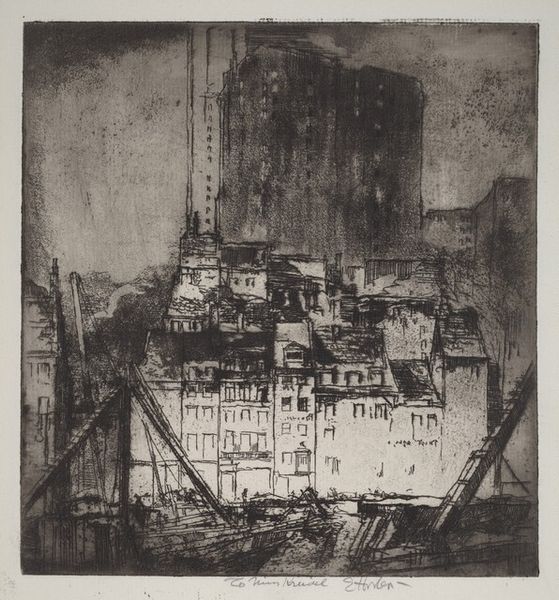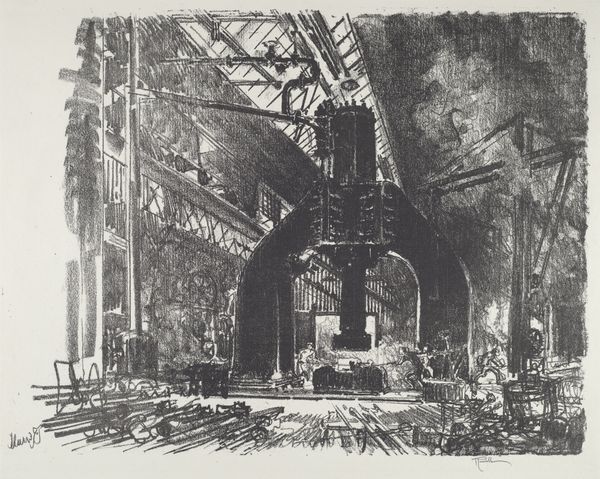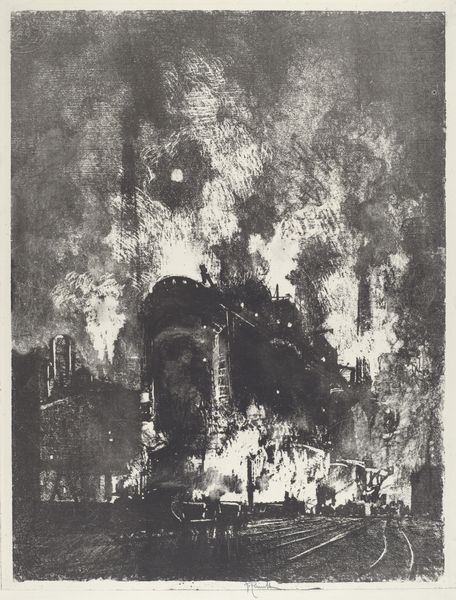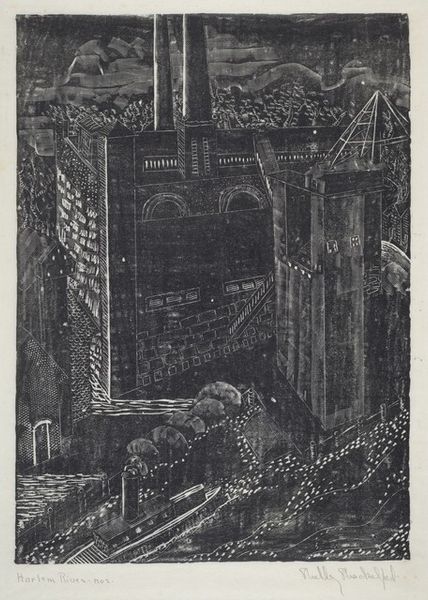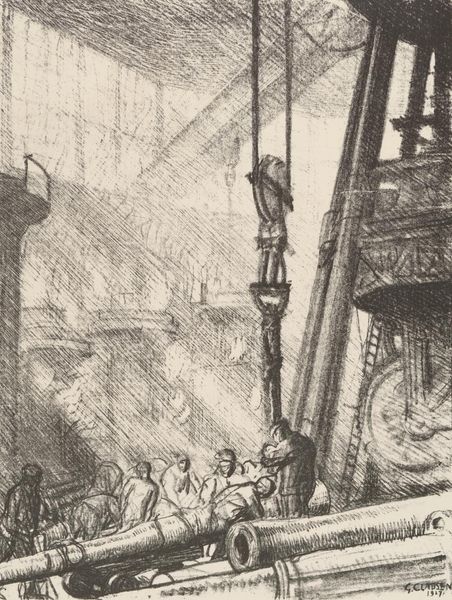
Dimensions: image: 133 x 95 mm
Copyright: © The estate of James Boswell | CC-BY-NC-ND 4.0 DEED, Photo: Tate
Curator: Oh, this is intense, it feels like a bad dream! Editor: Indeed. What you’re seeing is James Boswell’s lithograph, “The Fall of London: Waterloo,” held here at the Tate. Curator: Lithograph, huh? I can almost smell the ink and feel the pressure of the stone. All that scratchy darkness...it's post-apocalyptic. Editor: Absolutely. Boswell’s interest lay in the process of urban decay itself. The choice of lithography mirrors the grit and industrial processes he observed in London's underbelly. Curator: He's showing us Waterloo station not as a monument but as a site of…almost violent transformation, wouldn’t you agree? Editor: Precisely. The bombed-out station is also a canvas for labor, destruction and reconstruction—a testament to constant reshaping through material means. It is a powerful statement about materiality itself. Curator: It definitely makes me ponder how art can capture not just what we see, but what haunts us. Editor: And how the making reveals deeper truths about the world around us.
Comments
tate 7 months ago
⋮
http://www.tate.org.uk/art/artworks/boswell-the-fall-of-london-waterloo-p11656
Join the conversation
Join millions of artists and users on Artera today and experience the ultimate creative platform.
tate 7 months ago
⋮
Waterloo one of eight lithographs describing The Fall of London. Ron Heisler believes that they were originally conceived for a book by Frank McIlraith and Roy Connolly called Invasion From The Air which describes a Fascist invasion of England (information from Ron Heisler, August 2003). The theme of the book, which was published in 1934, is reminiscent of Boswell’s prints, which illustrate both popular uprisings in the City of London and horrific scenes of the city in ruins. Unlike the majority of the other prints in the series, Boswell gives the exact location of this terrifying scene. The enormous arch of the railway bridge rises above the built up area in the background and the train, which appears crushed and about to fall over, in the foreground. Passengers can be seen disembarking from the carriages which tilt unnervingly to the left. The railway signal leans surprisingly in the opposite direction. The expressionist lighting lends to London’s mainline station an even more forbidding atmosphere.
